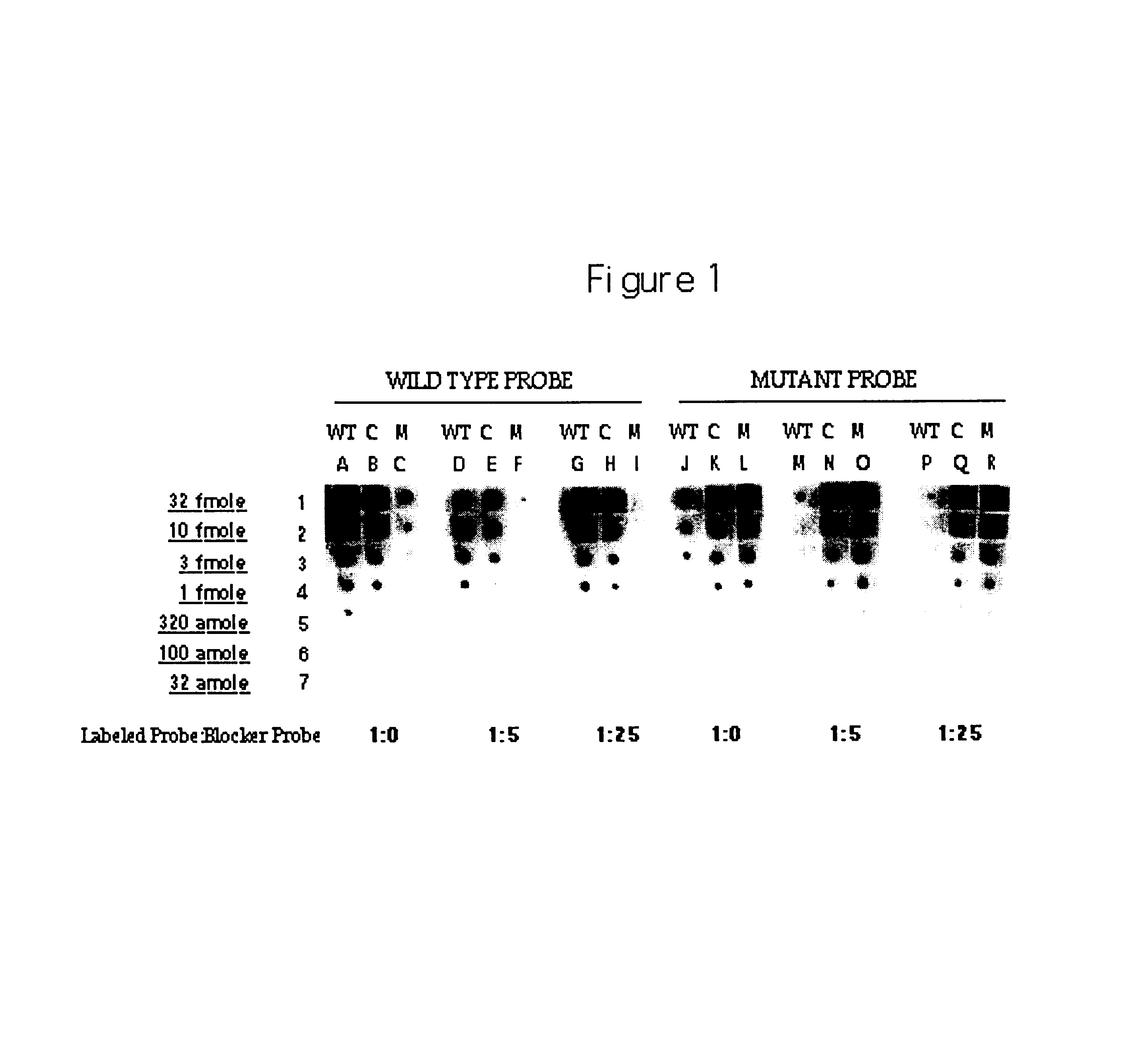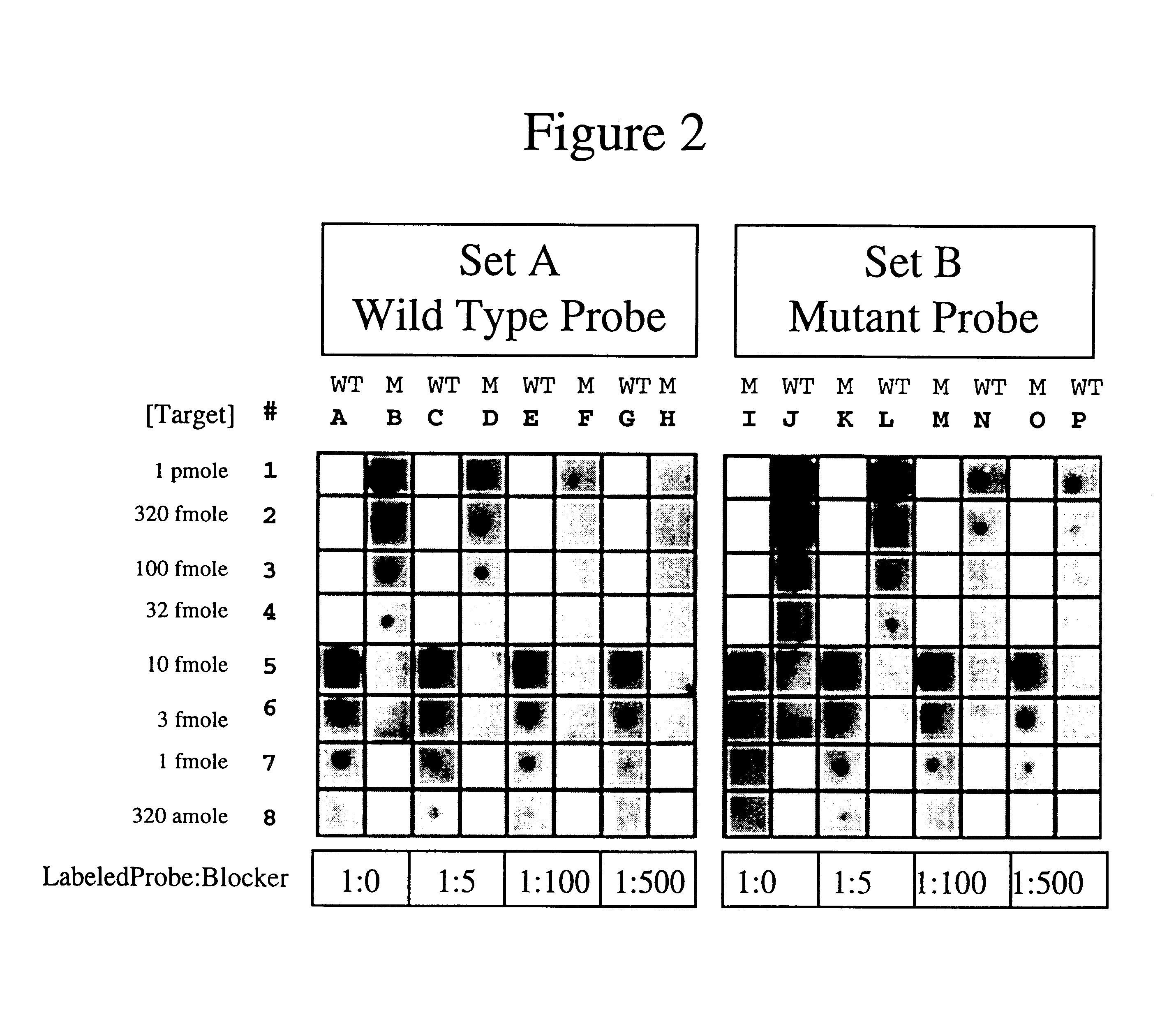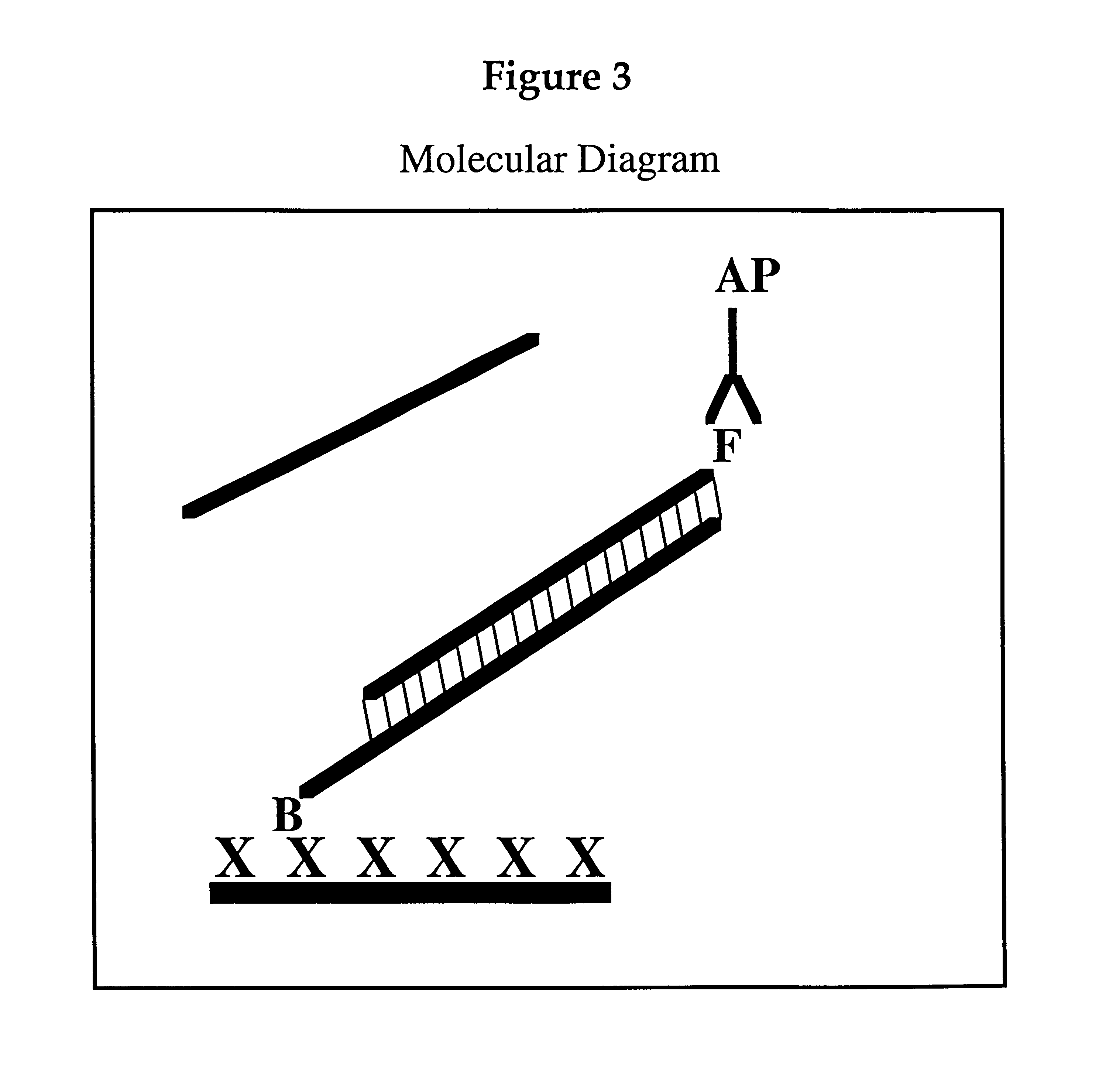Methods, kits and compositions for suppressing the binding of detectable probes to non-target sequences in hybridization assays
- Summary
- Abstract
- Description
- Claims
- Application Information
AI Technical Summary
Benefits of technology
Problems solved by technology
Method used
Image
Examples
example 1
Synthesis of 4-(N-(tert-butyloxycarbonyl)-aminobenzoic acid
[0143]To 100 mM of methyl-4-amino benzoic acid stirring in 150 mL of dioxane was added 110 mM of di-tert-butyl-dicarbonate. The reaction was warmed to 70-80° C. and let stir for about 48 hours. The solvent was then evaporated under reduced pressure and the residue redissolved in about 300 mL of ethylacetate. The organic layer was then washed three times with 10% aqueous citric acid, dried (Na2SO4), filtered and evaporated to a solid. The solid was then suspended in 150 mL of 1N NaOH and 50 mL acetone. The saponification of the ester was allowed to run overnight until complete hydrolysis was observed by thin layer chromatography (TLC). To the solution was added citric acid until the pH of the solution was approximately 4. The solid was then collected by vacuum filtration and dried in a vacuum oven at 50° C. Yield 20.3 g, 85%. The product was a single peak when analyzed by HPLC using 0.1% trifluoroacetic acid (TFA) and a linea...
example 2
Synthesis of Peptide Nucleic Acids
[0145]Peptide Nucleic Acids (PNAs) were synthesized using commercially available chemicals and instrumentation from PerSeptive Biosystems, Inc. Labeling of the amino terminus of the PNA oligomer with a linker group while the oligomer was still support bound was accomplished by condensation of two subunits of Expedite PNA Linker (P / N GEN063032) using one of the auxiliary positions of the PNA synthesizer and the standard coupling cycle. To the amino terminus of the elongated polymer was condensed 4-(N-(tert-butyloxycarbonyl)-aminobenzoic acid (see Example 1). After desired modification of the amino terminus of the polymer, the oligomers were then cleaved from the support and deprotected according to the manufactures instructions. The crude oligomer samples were then purified by High Performance Liquid Chromatography (HPLC) using 0.1% trifluoroacetic acid (TFA) and a linear acetonitrile gradient. This process yielded purified aryl amine terminating oli...
example 3
General Procedure for Conjugation of Arylamine Containing Peptide Nucleic Acids (PNA's) to Soybean Peroxidase or Alkaline Phosphatase
Stock Solutions:
1. Probe Stock:
[0146]Purified arylamine terminated PNA probe, typically fifteen residues in length, was dissolved at a concentration of approximately 0.33 μmol per milliliter in 50% aqueous dimethylformamide (DMF).
2. Enzyme Stock:
[0147]Soybean peroxidase, conjugate grade, obtained from Enzymol International, Columbus Ohio, was dissolved at a concentration of 2.65 mg per milliliter in an aqueous buffer comprised of 3 M NaCl, 10 mM MgCl2, 0.1 mM ZnCl2 and 30 mM N-methylmorpholine adjusted to pH 7.6 with 12 N hydrochloric acid.
3. 30% Aqueous DMF:
[0148]An aqueous DMF solution was prepared by combining three volumes of DMF with 7 volumes of water.
4. MES Buffer
[0149]An 0.2 M solution of 4-morpholineethanesulfonic acid (MES) in water was prepared (not pH adjusted).
5. Glycine Solution
[0150]A solution comprised of 0.5 M glycine and 0.25 M sodium...
PUM
| Property | Measurement | Unit |
|---|---|---|
| Molar density | aaaaa | aaaaa |
| Molar density | aaaaa | aaaaa |
| Molar density | aaaaa | aaaaa |
Abstract
Description
Claims
Application Information
 Login to View More
Login to View More - R&D
- Intellectual Property
- Life Sciences
- Materials
- Tech Scout
- Unparalleled Data Quality
- Higher Quality Content
- 60% Fewer Hallucinations
Browse by: Latest US Patents, China's latest patents, Technical Efficacy Thesaurus, Application Domain, Technology Topic, Popular Technical Reports.
© 2025 PatSnap. All rights reserved.Legal|Privacy policy|Modern Slavery Act Transparency Statement|Sitemap|About US| Contact US: help@patsnap.com



